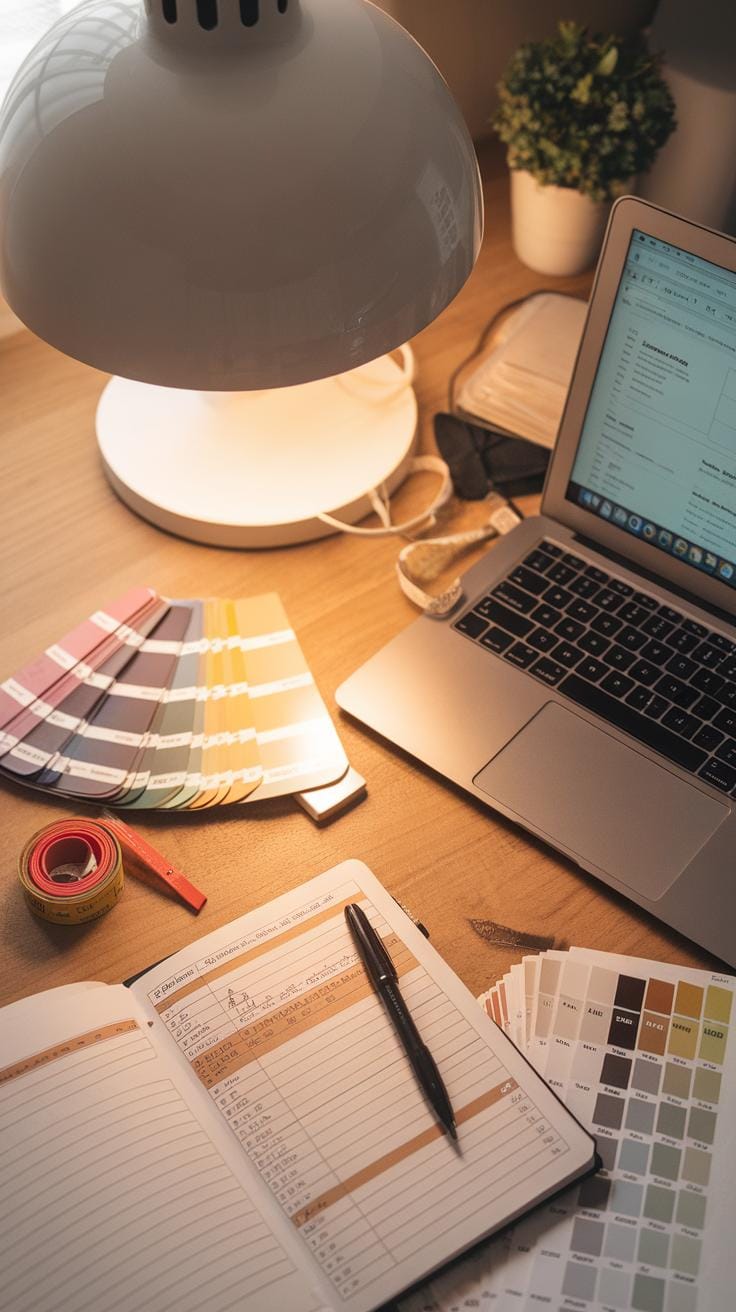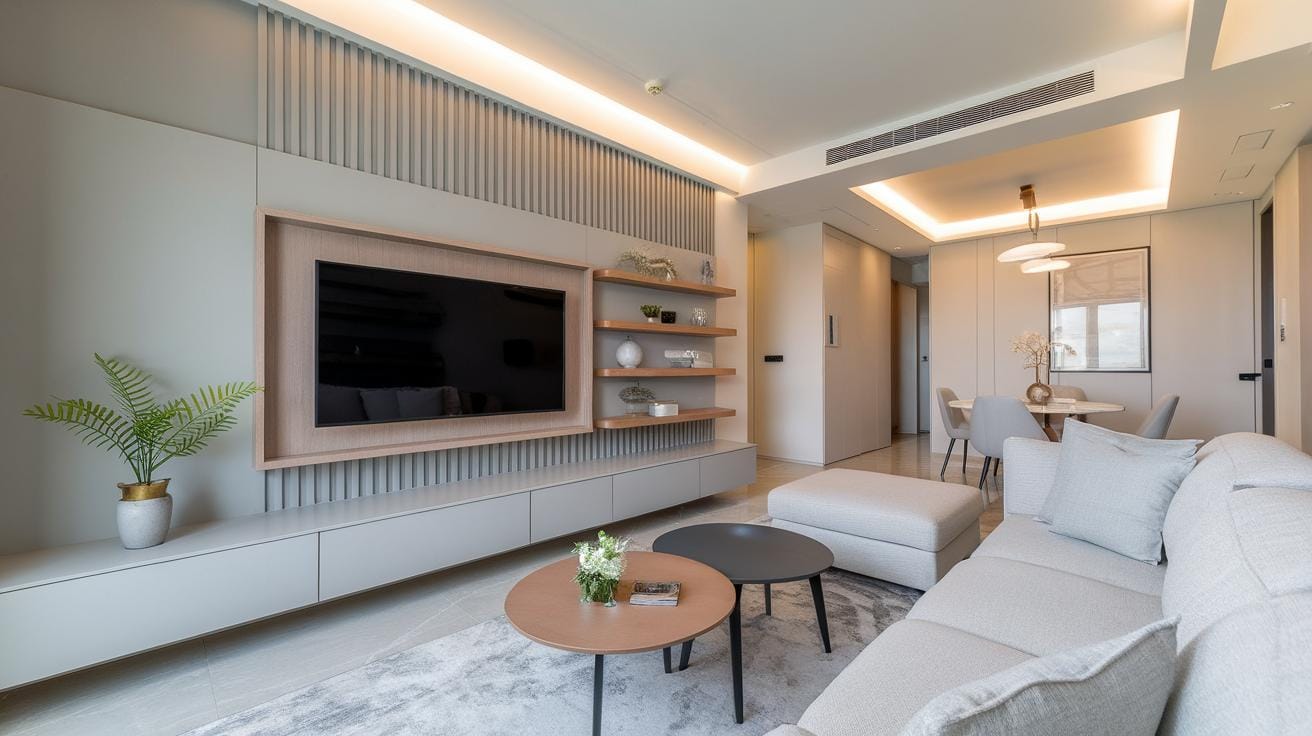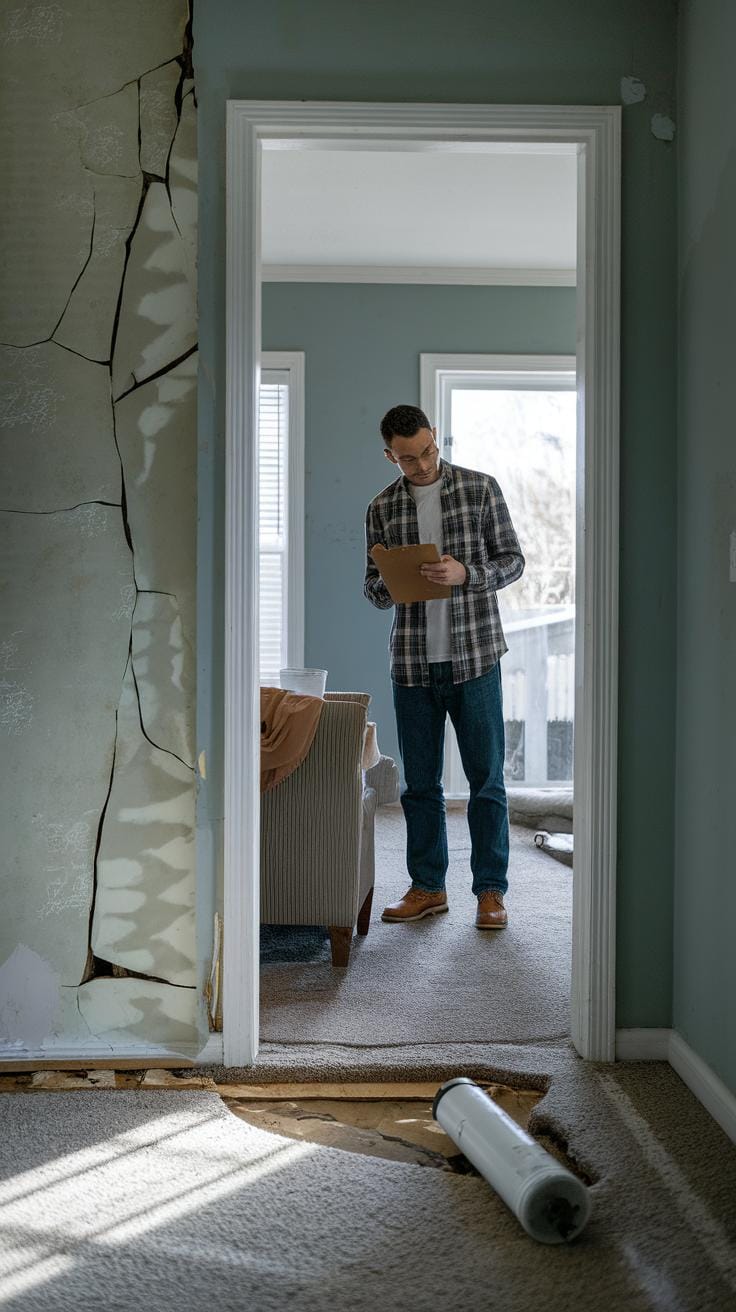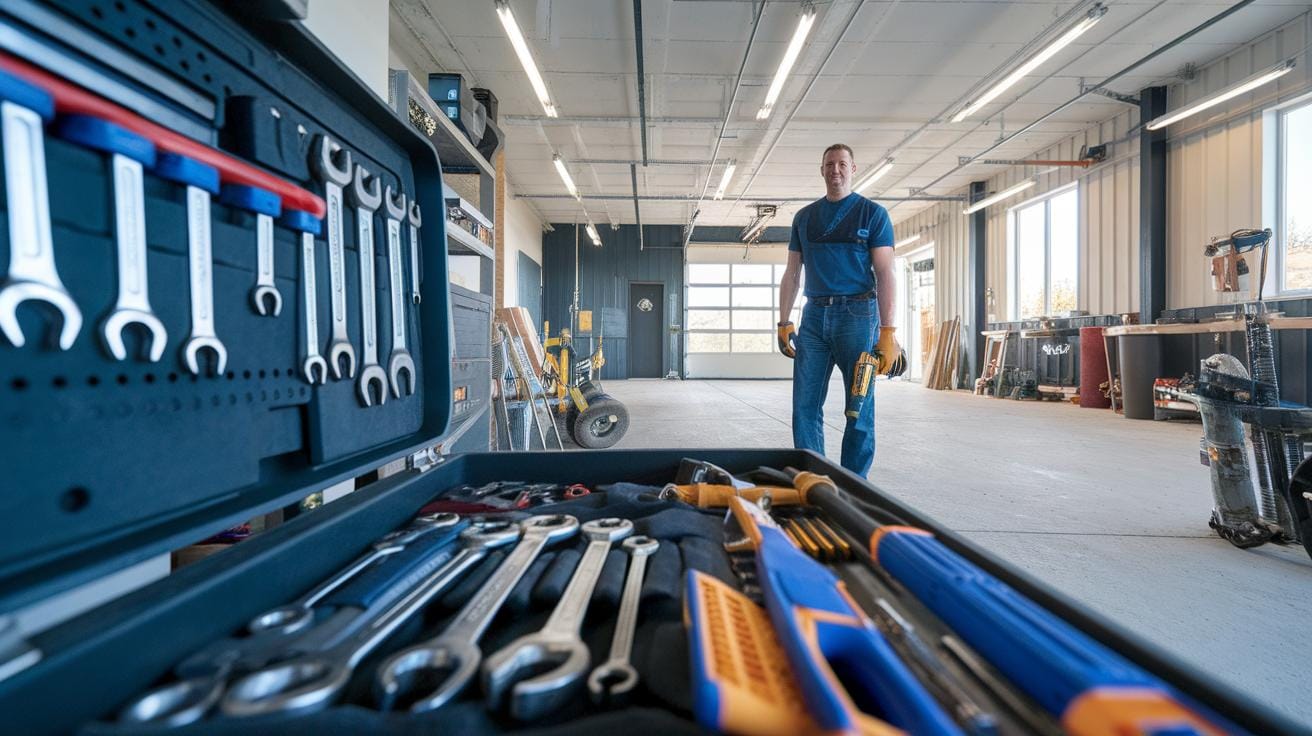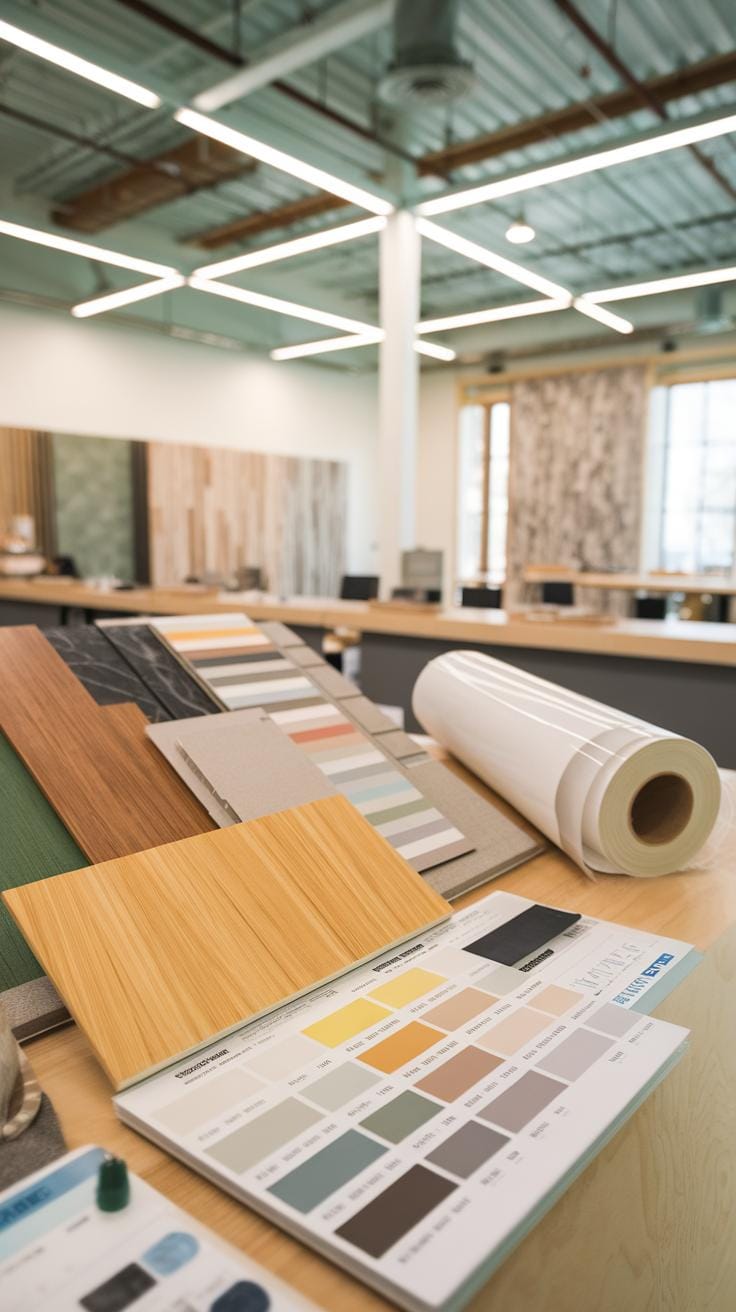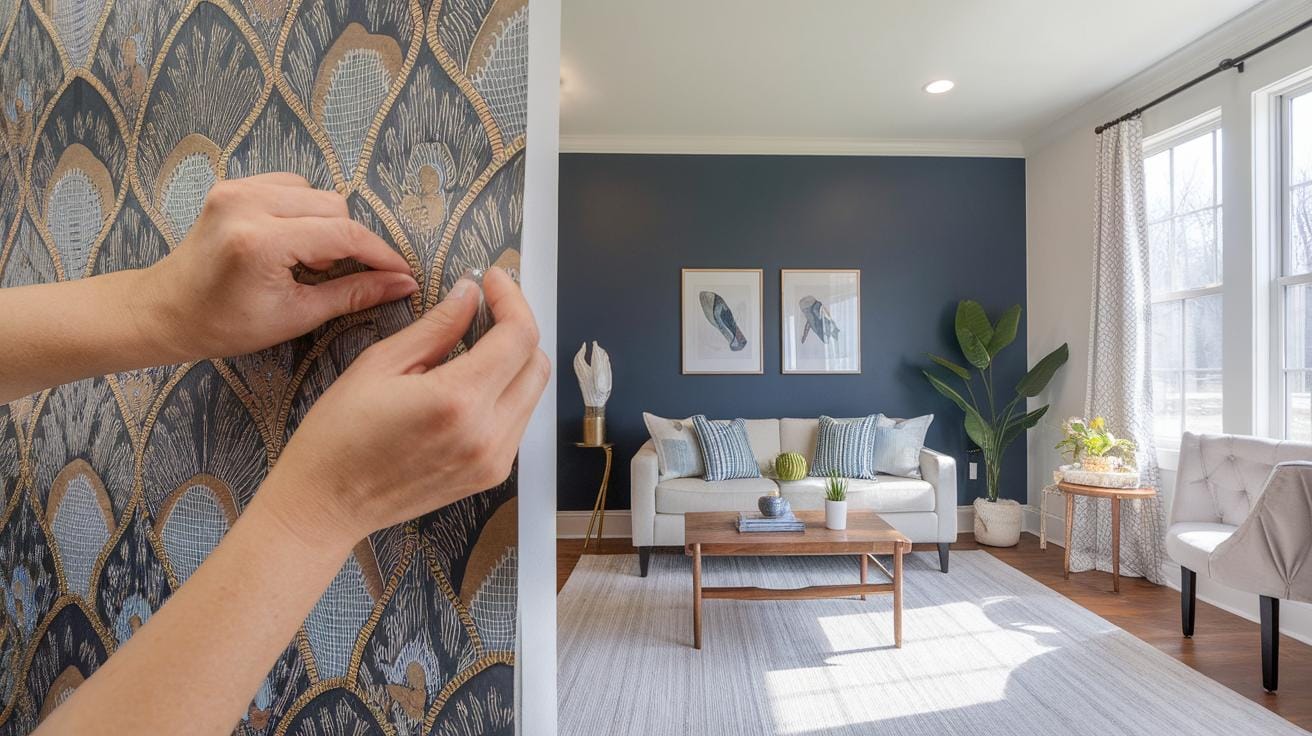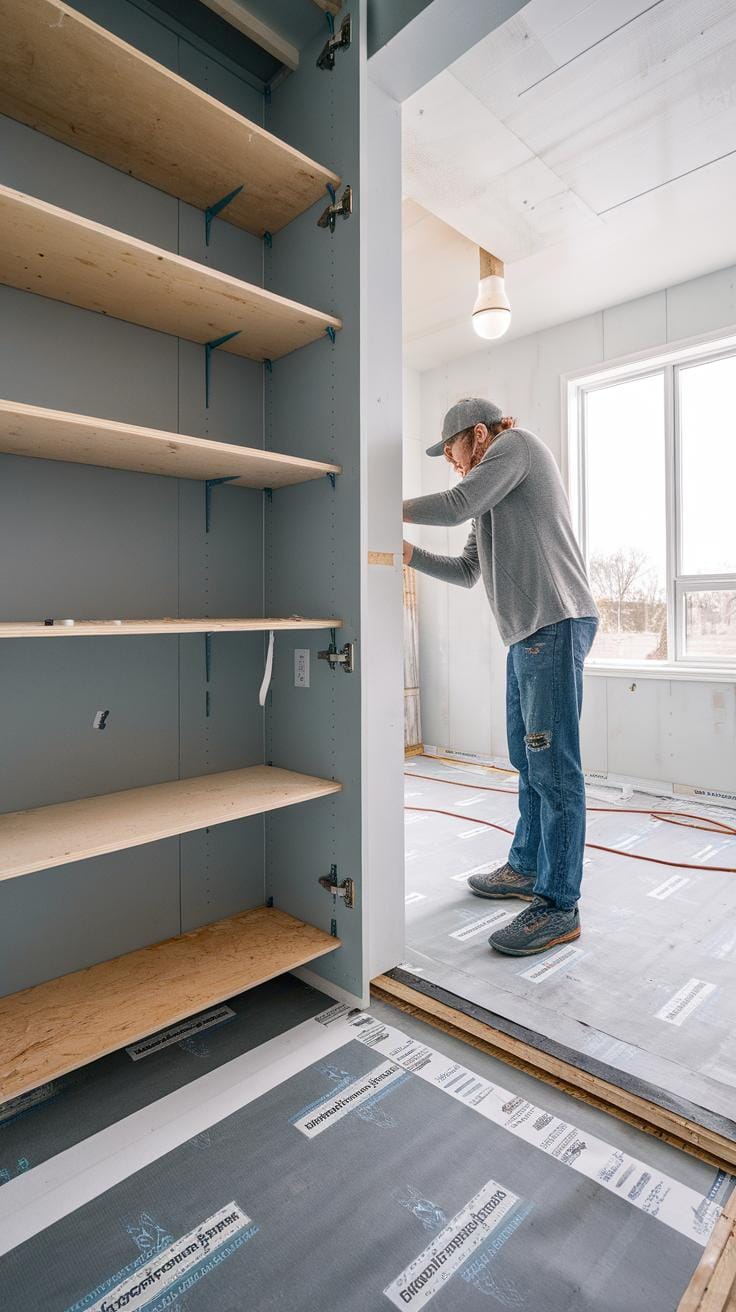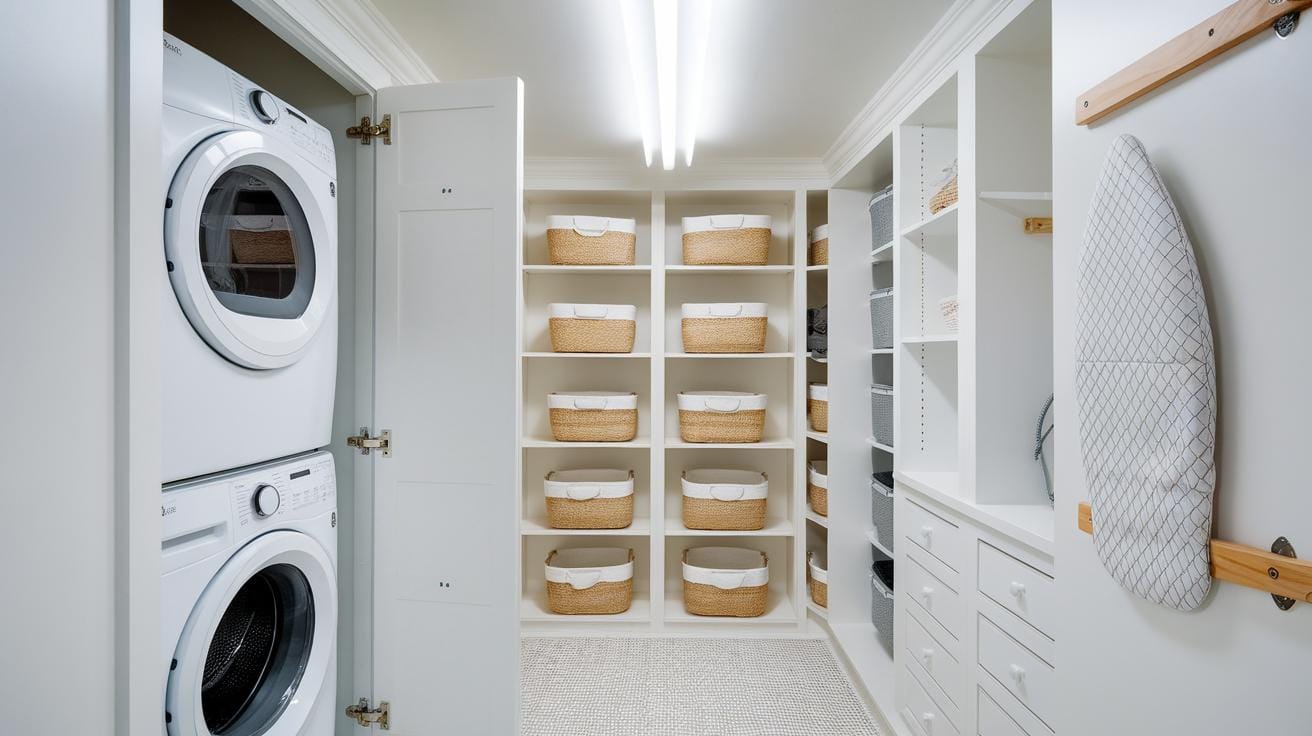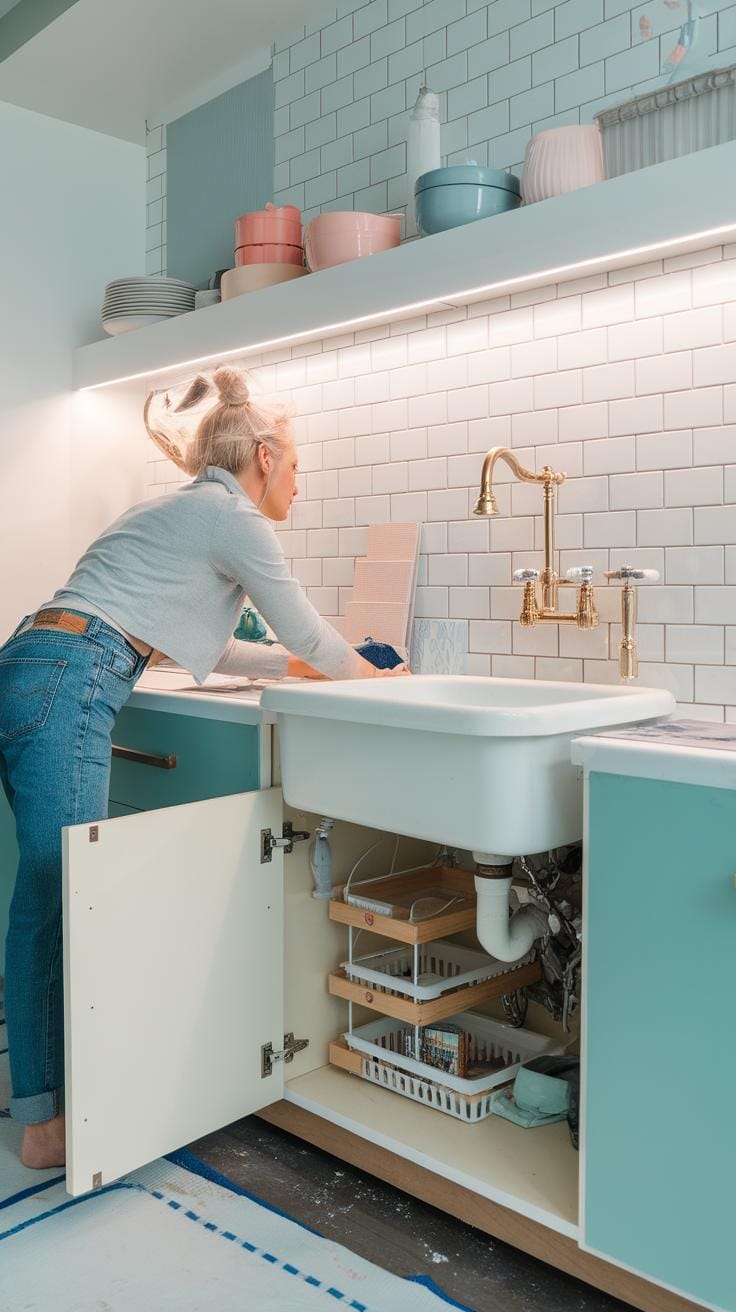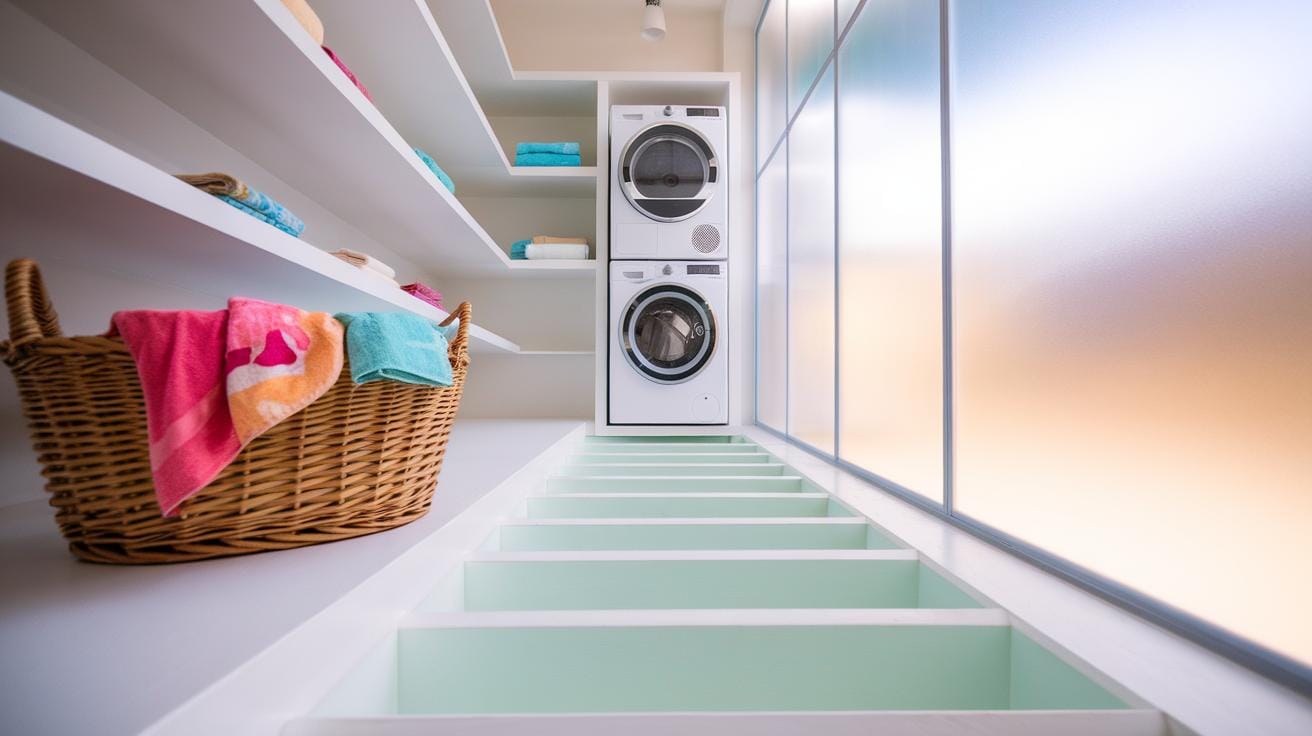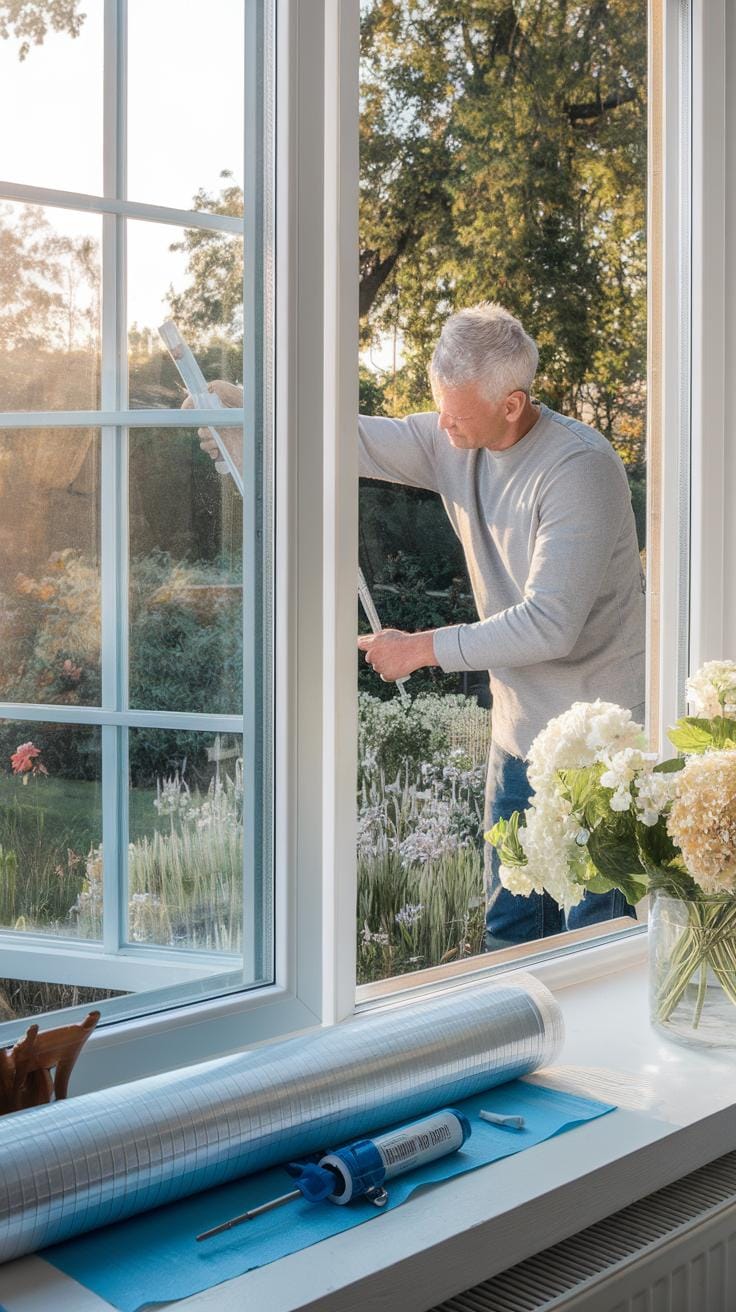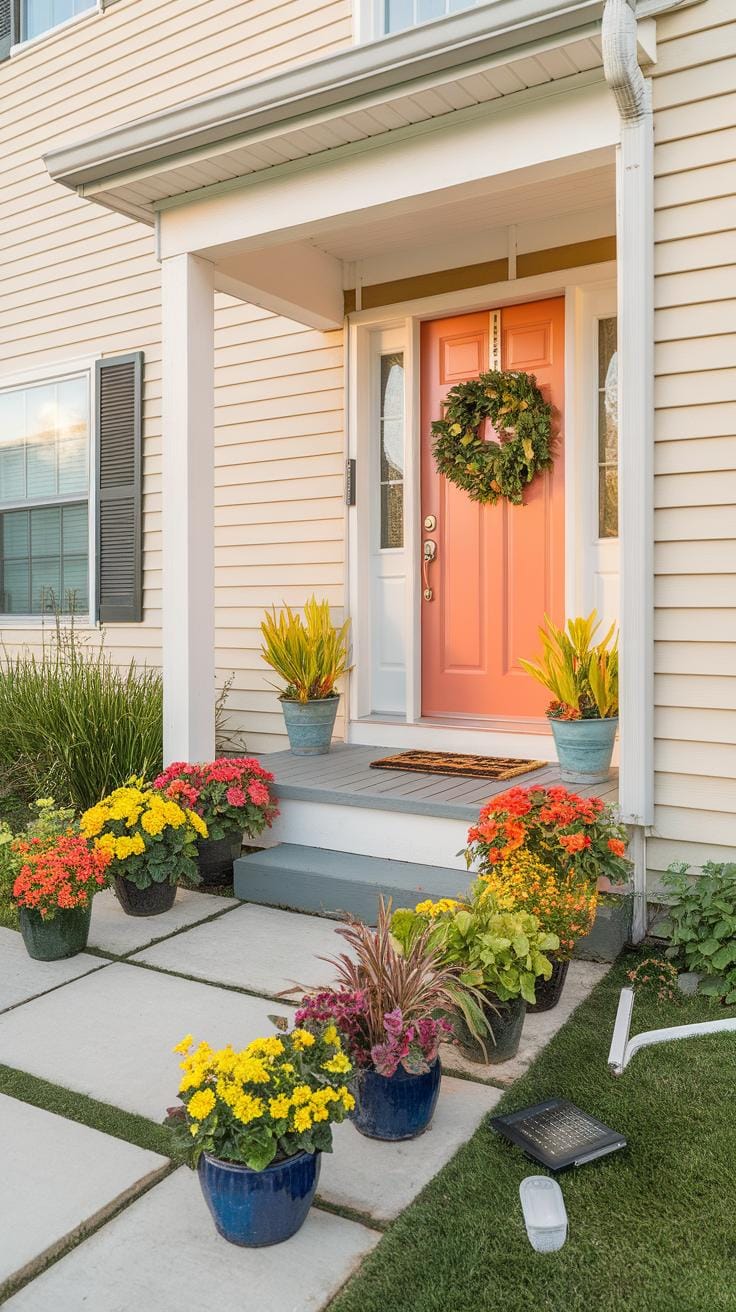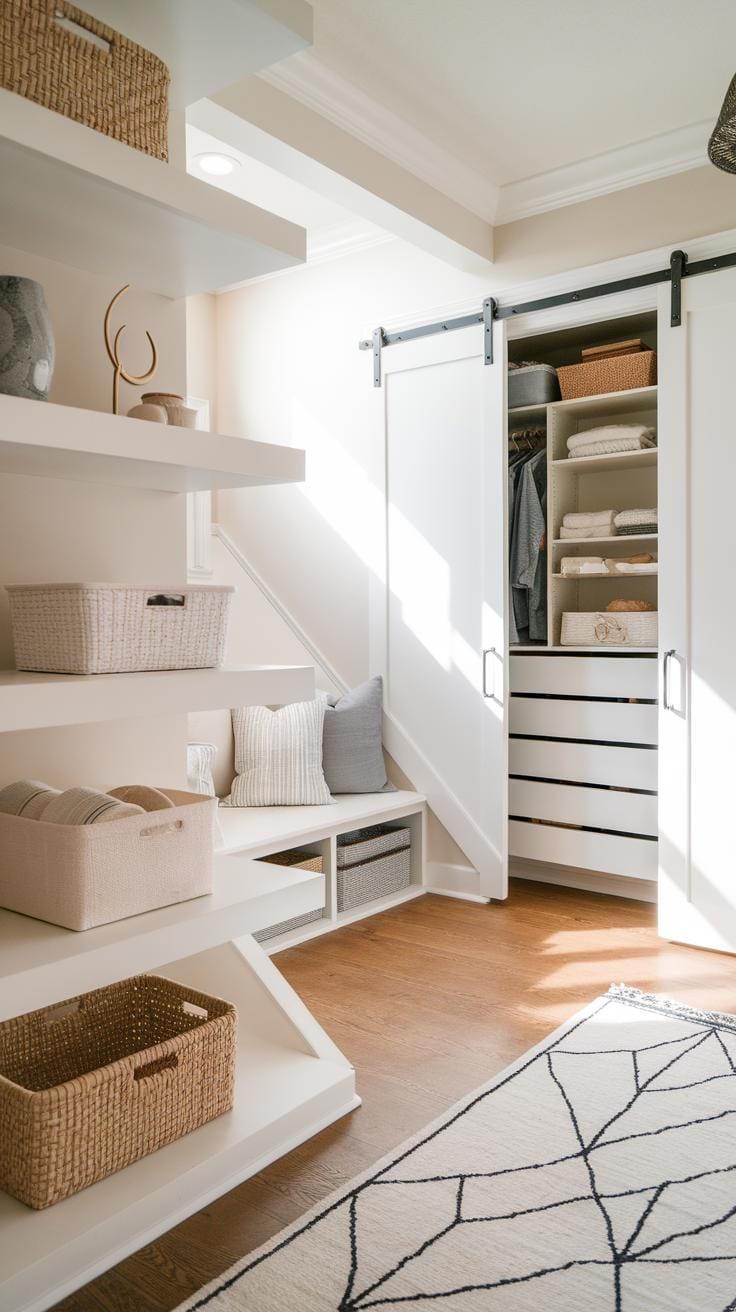Introduction
Renovating a house on a low budget might seem difficult, but it is possible to create impressive results with careful planning and smart choices. Many homeowners wonder how to improve their living spaces while keeping costs manageable. By focusing on practical and efficient strategies, you can make your home look fresh, functional, and inviting without spending a fortune.
In this article, you will learn about effective low budget house renovation ideas that can make a big difference. These ideas cover different parts of your home and provide actionable insights to help you prioritize and carry out your renovation project. Are there ways to reuse materials, simplify designs, or focus on key renovations that add value? Let’s explore how to approach your home renovation with solutions that truly deliver.
Planning Your Low Budget Renovation
Planning is key to managing a low budget renovation successfully. Start by setting a clear budget that matches what you can realistically spend. Knowing this number upfront helps you avoid costly surprises and overspending later.
Prioritize your renovation needs by deciding which rooms or repairs need attention first. For example, fix leaky roofs or broken windows before focusing on cosmetic updates. This keeps critical issues from getting worse and helps you spread your budget wisely.
Creating a renovation timeline helps keep the process organized. When do you want each stage to be done? How long will materials take to arrive? A timeline keeps tasks on track and reduces delays that might increase costs.
Assess your house’s current condition to spot urgent repairs and areas that bring the most value. This can guide your priorities and prevent wasting time and money on less important projects. What parts of your home need attention now? What can wait?
Setting a Realistic Budget
Estimating renovation costs requires research. Get quotes for materials and labor before you start. Look online or visit local stores to compare prices. This gives a clearer idea of what you’ll spend.
Focus most of your budget on critical repairs and areas that increase the home’s value, like kitchens and bathrooms. These improvements usually have the biggest impact on both daily life and resale potential.
Keep a reserve fund for unexpected expenses. Even with a solid plan, surprises like hidden damage can arise. Setting aside 10-15% of your budget for these helps avoid forcing cuts elsewhere.
Prioritizing Renovations
Start with the most important areas to improve your home’s safety and function. Structural repairs come first because they protect the entire house. Fixing foundations, beams, or roofs saves costly damage later.
Kitchens and bathrooms require attention early since you use them every day. Upgrading these spaces can make your home feel more comfortable and appealing. Small fixes like new fixtures or fresh paint can make a big difference here.
By focusing first on these priority areas, you get clear, noticeable improvements. This method helps you spend your money wisely and motivates you to keep moving forward with your renovation.
Assessing Your Homes Current Condition
Start by thoroughly inspecting your home before any renovation. Walk through each room, checking walls, ceilings, and floors for cracks, moisture, or damage. Look for signs of mold or peeling paint, which may indicate water problems. Check doors and windows to see if they open and close smoothly and if they let drafts in.
Don’t forget to examine hidden areas like basements, crawlspaces, and attics. These spots often reveal problems like leaks or pest damage. Testing outlets and switches can help you spot electrical issues early.
Understanding these details saves you from costly surprises during renovation. When you know what needs fixing, you can set a realistic budget and timeline, focusing on urgent repairs before cosmetic updates. What parts of your home need the most attention? This clear picture guides your renovation plan and helps you spend wisely.
Structural and Safety Checks
Check the foundation for cracks, shifting, or sinking. Small hairline cracks may be common, but wide or growing cracks suggest serious issues. Look under the roof for missing shingles, water stains, or signs of leaks inside the attic. These problems can damage your entire home.
Check walls and floors for unevenness or bowing. Tap walls to listen for hollow spots that could mean damaged drywall or termites. Safety comes first: fixing foundation or roof issues protects your home’s value and keeps your family secure.
Evaluating Systems and Utilities
Inspect plumbing by turning on faucets and checking under sinks for leaks or corrosion. Low water pressure or slow draining may signal clogs or aging pipes. Test electrical outlets and switches, watching for flickers or sparks that indicate wiring problems.
Evaluate your heating system by running it through a cycle and listening for unusual noises. Dirty filters or inefficient units waste energy and increase bills. Fixing plumbing, electrical, or heating issues now avoids emergencies and helps you save money on repairs down the road.
Smart Material Choices for Budget Renovations
You can stretch your renovation dollars by picking the right materials. Look for options that last but don’t cost a fortune. Reclaimed wood works well on walls or floors and adds warmth without high prices. Some reclaimed pieces may need sanding or sealing before use, but the savings pay off.
Laminate flooring is durable and looks like wood or stone for less. It installs quickly, so you save on labor costs too. Choosing cost-effective paint can uplift rooms instantly. Flat paints cover imperfections, while semi-gloss stands up to moisture in kitchens and bathrooms.
Mixing new materials with reused ones creates a fresh yet affordable look. Think about pairing laminate floors with a reclaimed wood accent wall. This adds style without pushing your budget. How can you match materials to fit your home’s character and your wallet?
Using Recycled and Reclaimed Materials
Reclaimed wood, bricks, and tiles often come from salvage yards, Habitat for Humanity ReStores, or online marketplaces. These places offer unique materials that carry history and texture. Reusing items like old barn wood or vintage bricks can make your home stand out.
Before use, check reclaimed materials for damage, pests, or moisture. Clean and treat wood to avoid issues later. Bricks should be solid and free from cracks. Tiles can be tested to ensure they won’t crack under pressure. Careful selection protects your investment and your home’s safety.
Affordable Alternatives
Vinyl flooring is a practical choice. It’s waterproof, easy to clean, and comes in many designs, including wood and stone looks. Beadboard paneling can update walls or ceilings with classic style at a low cost. Both options balance price, appearance, and durability well.
Think about how often your floors or walls face wear and tear. In busy areas, select materials that last. Less-used spaces might call for more budget-friendly options. Ask yourself: where can you save on materials without sacrificing quality?
Effective DIY Renovation Projects
Doing renovation tasks yourself can save money and give your home a fresh look. Painting walls is one of the easiest projects. You only need paint, brushes, rollers, painter’s tape, and drop cloths. Make sure to prepare surfaces by cleaning and patching holes before painting. A well-prepped wall helps your work look smooth and lasts longer.
Installing shelves provides extra storage and a new design feature. Basic tools like a drill, level, measuring tape, and wall anchors will help you mount shelves safely. Fixing cabinets by tightening hinges or replacing handles refreshes kitchen or bathroom spaces without a full remodel.
Landscaping doesn’t require big investments. Planting flowers, trimming bushes, or laying mulch can improve curb appeal. Gloves, pruning shears, and a rake are usually enough. Remember to follow safety tips like wearing eye protection and using ladders carefully. Taking on these projects yourself puts you in control and cuts down labor costs.
Painting and Surface Updates
Fresh paint changes a room’s appearance quickly and cheaply. Choosing the right color sets the mood. Light colors open small rooms, while bold shades add flair to main areas. Before painting, clean walls well and fill cracks or holes. Use painter’s tape to protect trim and windows.
Apply primer on surfaces with stains or strong colors for even coverage. Use smooth, even strokes and paint edges first with a brush, then fill large areas with a roller. Let each coat dry fully before applying the next. Ventilate rooms to help paint dry faster and keep the air fresh.
Painting walls yourself not only cuts costs but gives you control over the style and finish. You might be surprised how a few cans of paint and some prep work change your home’s feel.
Simple Fixtures and Fittings
Small updates like new cabinet handles, lighting fixtures, or curtain rods create a fresh look without big expense. Installing cabinet handles requires just a screwdriver and measuring to align holes properly. Swapping old handles with modern designs instantly upgrades kitchen or bathroom cabinets.
Replacing light fixtures can change room ambiance and improve visibility. Ensure power is off before working with electrical fittings, and use a voltage tester for safety. Many fixtures come with clear instructions and basic tools are usually enough, like a screwdriver and wire strippers.
Add curtain rods to frame windows and add style. These need brackets and screws, plus a level to mount them straight. Changing fixtures in your home boosts appeal and functionality while keeping your budget intact. What small fix could improve your space today?
Upgrading Kitchens and Bathrooms on a Budget
Kitchens and bathrooms add major value to your home, but full remodels often cost too much. You can still make a big impact with small upgrades that focus on key areas.
Replacing faucets offers a fresh look and better water flow without breaking the bank. Many affordable models come with modern styles that match your home’s vibe. Think about fixture function as well as design.
Cabinet refacing or repainting gives your kitchen or bathroom a new feel. It’s cheaper than new cabinets and takes less time. If you add practical storage options like shelves or organizers, these rooms feel bigger and work better.
Lighting upgrades improve both function and style. Swap old fixtures for brighter, energy-saving options. Adding task lighting in the kitchen or vanity lights in the bathroom changes how you use the space every day.
Small changes can make a big difference without a full remodel. What affordable upgrade would make your kitchen or bathroom more enjoyable and useful?
Cabinet Refacing and Storage Solutions
Refacing cabinets means replacing or repainting the doors and drawer fronts. This refreshes your kitchen or bathroom without the cost of new cabinets. Choose a neutral paint or stain to brighten up the room.
Adding shelves inside cabinets or on walls improves storage. Use baskets or organizers to keep things tidy. This reduces clutter and helps you find items quickly.
Think about what you need daily. Could a pull-out drawer or spice rack make cooking easier? These small storage extras help use space efficiently and improve your daily routine.
Could revamping your cabinets and storage add storage and style without spending a lot?
Updating Fixtures and Hardware
Changing faucets, sinks, and light fixtures can give kitchens and bathrooms a newer look. Many modern faucets offer water-saving features, which can cut costs over time.
Swap out old cabinet handles and drawer pulls for sleek new hardware. This simple update refreshes the look and feels fresh without changing the cabinets.
Replace outdated light fixtures with energy-efficient LED lights. These brighten the room and reduce electricity bills. In bathrooms, use fixtures that provide soft but clear light for grooming tasks.
How would new hardware and fixtures make your kitchen or bathroom easier to use and more appealing?
Improving Home Energy Efficiency
Boosting your home’s energy efficiency doesn’t require a big budget. Start by focusing on the areas that cause the most energy loss. Insulating walls helps keep heat inside during winter and blocks outside heat in summer. You can use affordable materials like foam board or fiberglass batts for simple, DIY-friendly insulation.
Sealing drafts around doors, windows, and vents stops cold or hot air from entering your home. Weatherstripping and caulking are cheap and easy ways to plug leaks. Have you checked for drafts near your baseboards and electrical outlets? Those spots often get overlooked but can waste energy.
Upgrading to energy-saving lighting, such as LED bulbs, reduces electricity bills noticeably. LEDs use roughly 75% less energy and last years longer than traditional bulbs. You can also replace old windows with energy-efficient ones or add window film to cut heat loss.
Small steps like these add up to real savings. Which energy improvements fit your home and budget best?
Insulation and Weatherproofing
Proper insulation lowers heating and cooling costs by keeping the temperature steady inside your home. Adding insulation in attics and walls makes a major difference, especially if your home lacks it now. Use affordable options like fiberglass rolls or recycled cotton insulation for an easy upgrade.
Sealing leaks stops drafts that force your heater or AC to work harder. Apply weatherstripping around doors and windows, and use caulk to fill cracks in walls or near plumbing pipes. Have you noticed cold spots or uneven temperatures in certain rooms? Those might be signs you need weatherproofing.
These improvements increase comfort and reduce your energy bills. Taking time to weatherproof can pay off quickly without heavy investment.
Energy-Efficient Fixtures
Switching to LED bulbs stands out as the simplest way to save power without sacrificing brightness. You can replace every bulb in your home for under $100 and see an immediate drop in energy use.
Upgrading to Energy Star appliances also reduces electricity and water consumption. Look for deals on refrigerators, washing machines, and dryers with this label. They use technology designed to cut utility bills over time.
Installing a smart thermostat allows you to control heating and cooling schedules easily. It can lower your energy use by adjusting temperatures when you’re away or asleep. Many options cost less than $150 and install in minutes.
How might these fixtures fit into your renovation plans to save energy and money?
Enhancing Curb Appeal on a Budget
Your home’s exterior shapes the first impression people get. Improving curb appeal does more than just catch the eye—it can raise your property’s value and make neighbors take notice.
Painting the front door is simple and affordable. Choose a color that contrasts well with your home’s exterior to make the entrance pop. For example, a bright red or deep navy door can transform a plain facade instantly.
Landscaping doesn’t require expensive plants or professionals. Focus on easy-care shrubs and tidy flower beds. Adding fresh mulch around trees and plants refreshes the look while suppressing weeds.
Fixing walkways improves safety and style. Repair cracks or replace missing stones without removing the entire path. Sometimes just power washing can remove years of grime.
Updating exterior lighting is another low-cost step. Swap outdated fixtures with modern ones or add solar-powered lights along pathways to create a welcoming glow at night.
How does your home’s outside look to visitors before they even open the door? Small actions can change this perception without stretching your budget.
Simple Landscaping Tips
Choose shrubs that thrive in your local climate and need little care. Boxwood and juniper are good examples that hold their shape well.
Place mulch around trees and flower beds for a neat appearance. Mulch also helps retain moisture and reduces gardening work.
Trim overgrown branches to let more sunlight reach your lawn and garden. This refreshes the space and keeps plants healthy.
Planting a few seasonal flowers near the entrance offers color without much effort. You don’t need a large garden to create a welcoming environment.
Could you spend a few hours each month to keep the landscaping tidy? These small habits maintain curb appeal in the long run.
Exterior Painting and Repairs
Painting door and window trims gives the house a clean, cared-for look. Use weather-resistant paint to extend the life of your work.
Clean gutters regularly to prevent water damage and keep the roofline neat. Simple tools like a ladder and gloves make this task affordable.
Repair or repaint fences to avoid a worn or broken appearance. Fix loose boards or nails rather than replacing entire sections.
Inspect your siding or brick for small cracks or missing caulking. Filling these gaps prevents moisture entry and maintains structure integrity.
When you focus on these visible details, you show that your home is well looked after, attracting positive attention from neighbors and potential buyers.
Optimizing Space and Storage
When working with a low budget house, making your space feel larger and more organized starts with decluttering. Removing items you no longer use or need frees up room and creates a cleaner, more open feel. Consider sorting your belongings into keep, donate, or toss piles to simplify this process.
Adding built-in shelving smartly uses vertical space, which often goes unused. These shelves fit snugly into empty corners or walls, keeping your belongings neat without taking up floor area. Custom shelving can adapt to your unique space and storage needs.
Multipurpose furniture helps you save both space and money. Items like fold-out desks or coffee tables with storage compartments pack a double punch—they offer function and reduce clutter. Have you thought about beds with storage drawers or using the space below stairs creatively for cabinets or shelves?
Creative storage under stairs or beds turns overlooked areas into valuable spots for your belongings. Using these ideas improves your home’s flow and makes even small rooms feel more spacious and orderly.
Built-In and Modular Storage
Built-in and modular storage systems make the best use of your space without costing a fortune. You can build simple shelves or cabinets yourself from affordable materials like plywood or MDF. Modular units allow you to mix and match components based on your room’s size and storage requirements.
Customization helps you address specific storage challenges. For example, narrow shelves can hold books or spices, while deeper cabinets store bulky items. Adjustable shelves offer flexibility as your needs change over time.
Installing these systems in underused spots like empty wall sections or corners can significantly free up floor space. You don’t need to spend a lot to get storage that fits your home perfectly and keeps everything in order.
Furniture with Storage Function
Furniture that doubles as storage helps you reduce clutter without adding pieces to your home. Ottomans with hidden compartments are perfect for living rooms—they store blankets, toys, or magazines while serving as extra seating.
Beds with built-in drawers use the space underneath perfectly and keep clothes or linens handy. Coffee tables with lift tops or side pockets provide more storage without sacrificing style.
Choosing these kinds of pieces means fewer separate storage containers, which clears floors and surfaces. Ask yourself what furniture you use daily and if it could serve another purpose to keep your home tidy and spacious.
Choosing Paint Colors and Finishes
Choosing the right paint colors can make your rooms feel brighter and more welcoming without spending much. Light colors reflect natural light, making a space appear larger and fresher. When you pick colors, consider how much sunlight each room gets at different times of the day. You may prefer cooler shades in rooms with a lot of sun to balance warmth or warmer tones in shady areas to add comfort.
Mixing paint finishes creates depth and interest. Use matte finishes on large wall surfaces to hide imperfections, while satin or glossy finishes work well on trims and doors to highlight architectural details. This contrast adds texture without extra cost. For example, a glossy finish on window frames can catch light and draw the eye, making your home feel more polished. Think about which areas deserve subtle shine and which benefit from a soft look. How can you use these finishes to make your home feel fresh and stylish?
Light and Neutral Colors
Light colors open up a room by reflecting light and reducing shadows. Whites, creams, soft grays, and pastels offer a clean look that helps your space feel airy and uncluttered. These shades work well with most furniture and decor styles, giving you flexibility without needing to repaint often.
Consider natural light when picking a color. North-facing rooms may look cooler and benefit from warm neutrals. South-facing rooms usually have warm sunlight, so cooler shades keep the space balanced. Testing paint samples during different times of the day helps you see how the color changes with light. How does your room’s lighting influence your color choice?
Texture with Finishes
Paint finishes affect how light interacts with surfaces, adding texture that changes a room’s mood. Matte paint absorbs light, softening walls and hiding flaws. Satin has a gentle sheen that makes surfaces feel smooth without too much glare. Glossy finishes reflect light strongly and show details clearly.
Use finishes strategically to highlight features like moldings, shelves, or doors. Combining matte walls with satin trim adds subtle texture differences that catch your eye. A high-gloss accent wall can become a focal point, adding personality without extra decoration. Have you thought about where finishes can create visual interest in your home? Experimenting with these options energizes your rooms while keeping costs low.
Finding Reliable Help on a Tight Budget
Finding professionals to assist with your renovation while keeping costs low requires careful effort. Start by asking friends, family, or neighbors for recommendations to find contractors with a proven track record. Always check multiple references and look at photos of their past projects to judge the quality of their work.
Use initial consultations to ask specific questions about timelines, materials, and costs. These meetings help you avoid surprises and decide if a contractor fits your budget and style. You don’t have to hire professionals for every task. Focus on hiring specialists only for critical jobs like plumbing or electrical work, where mistakes can be costly and unsafe.
For other areas, consider combining professional help with your own effort. This approach maximizes quality without overspending. Can you identify which tasks really need expert hands, and which ones you could tackle yourself?
Interviewing and Selecting Contractors
Ask potential contractors how long they have worked in the business and if they have the necessary licenses and insurance. Request detailed price estimates, and compare these carefully. Request a written contract to avoid hidden fees later on.
Check past client reviews to see if the contractor finishes work on time and stays within budget. Ask about their problem-solving skills by requesting examples of challenges they faced in recent jobs. Clear communication and honesty are just as important as skills and prices.
Would you trust a contractor who avoids answering questions directly? Trust your judgment if something feels off. Thorough vetting can save you stress and money.
Mixing Professional and DIY Work
Focus your contractor’s time on jobs requiring permits or specific skills, such as electrical wiring, plumbing, and structural repairs. Handling these tasks yourself can lead to expensive fixes or safety risks.
Save money by taking on non-technical projects like painting, installing shelves, or landscaping. These are typically easier to learn through online tutorials or workshops. This approach gives you control over your budget without sacrificing work quality.
Think carefully about your skill level and time availability. Could you finish some tasks well without extra help? Balancing what you do yourself and what you leave to experts helps stretch your renovation dollars further.
Conclusions
Putting together a successful low budget house renovation involves smart planning and focusing on impactful changes. Understanding your home’s current condition, setting realistic goals, and targeting key areas for improvement can help maximize your investment. You don’t need to spend a lot to enhance your living space and increase comfort. Careful selection of materials and DIY approaches could further stretch your budget.
Renovation projects can also open up opportunities for learning and creativity. With the right approach, you can turn your home into a more enjoyable and functional environment. What renovation steps will you try first? Which ideas will match your home style and personal needs? Use these insights to start your renovation journey with confidence and purpose.



